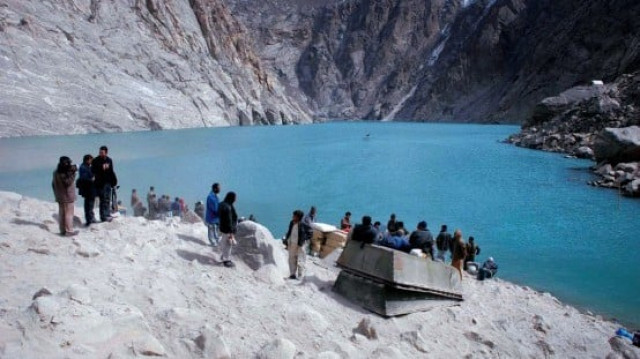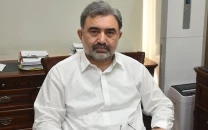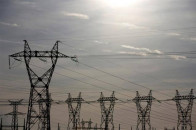Hunza Valley villages sitting on a time bomb

The January 4 landslide had blocked the Hunza River at the Attabad area, forming an artificial lake that is submerging upstream villages as it swells. If the lake breaks it banks, flashfloods could inundate downstream villages, disconnecting Gilgit from the rest of the country. The landslide has also blocked the main Karakoram Highway – a vital trade link with China, leaving more than 25,000 people in the Upper Hunza Valley stranded. At least 19 people were killed and many injured in the incident.
A large number of cattle and standing crops on hundreds of acres of land were also buried under tons of earth that blocked the flow of the once fast-flowing river and a long stretch of the fabled highway. The artificial lake is over 13 kilometres long and around 80 metres deep. Official sources said that the water-level in the lake was rising more than 2.5 feet a day. “What will we do with relief goods if our homes and villages cannot be saved,” Ajaz Ali, a native of Shishkat village, about 11 kilometres west of Attabad told The Express Tribune. “Does the government have not sufficient machinery to construct a spillway?” said Ali who was anxious about the rising water level in the lake.
Two upstream villages – Ainabad and Shishkat- have so far been flooded while the villages of Gulmit and Hussaini villages are threatened by the rising water level. According to statistics, about 1,700 displaced people of Attabad and adjoining hamlets of Sarat and Salmanabad have been sheltered in relief camps set up in schools in Shishkat and Karimabad towns. People stranded in Upper Hunza are relying on relief supplies ferried on helicopters and boats. Last month, the Gilgit- Baltistan government had declared Attabad a calamity-hit area. “We are aware of the impending danger.
We are doing our best to avert any untoward incident,” said Chief Minister Mehdi Shah, who along with the Speaker of the Legislative Assembly, Wazir Baig, made several visits to Upper Hunza. The authorities have downplayed the possibility of flashfloods, saying that the lake was unlikely to break its banks, albeit the water-level might rise enough to flow over the banks by June. “More than 85 per cent work on a spillway has been completed and it will be ready within two weeks,” an unnamed official told The Express Tribune.
A couple of nongovernmental organisations (NGOs) -- FOCUS Humanitarian Assistance and Pakistan Red Crescent Society -- engineers of Wapda, Frontier Works Organisation and Pakistan Army are working round-the-clock to keep the situation under control, officials said, adding that so far about 71,666 cubic metres out of a total of 96,000 cubic metres of earth has been removed from the site.



















COMMENTS
Comments are moderated and generally will be posted if they are on-topic and not abusive.
For more information, please see our Comments FAQ